“The artist is a receptacle for emotions that come from all over the place: from the sky, from the earth, from a scrap of paper, from a passing shape, from a spider’s web” - Pablo Picasso
Vision
The Contemporary Art Practice program stimulates and nurtures the creative force and artistic curiosity that resides in every individual. Its goal is to enable the student to enter the field of art practice through an interdisciplinary approach.
In the program the student explores specific media forms as well as non-media forms like drawing, painting, textiles, photography, sculpture, digital computing, coding, film, sound, performance, along with an exposure to science, technology, craft, public art and curatorial practices. This program provides a vibrant context that encourages critical thinking through making, dialogue, collaboration and community interaction.
Core Values
Social-cultural awareness
Collaborative spirit
Informed and ethical responses
Material consciousness
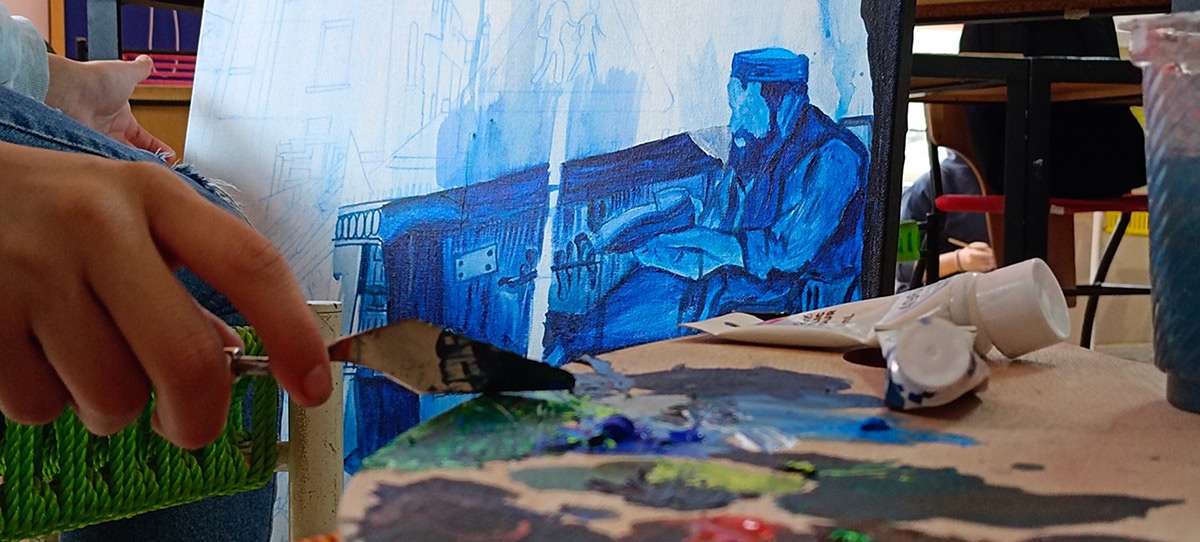
Work-in-progress from the studio 'Be the City'
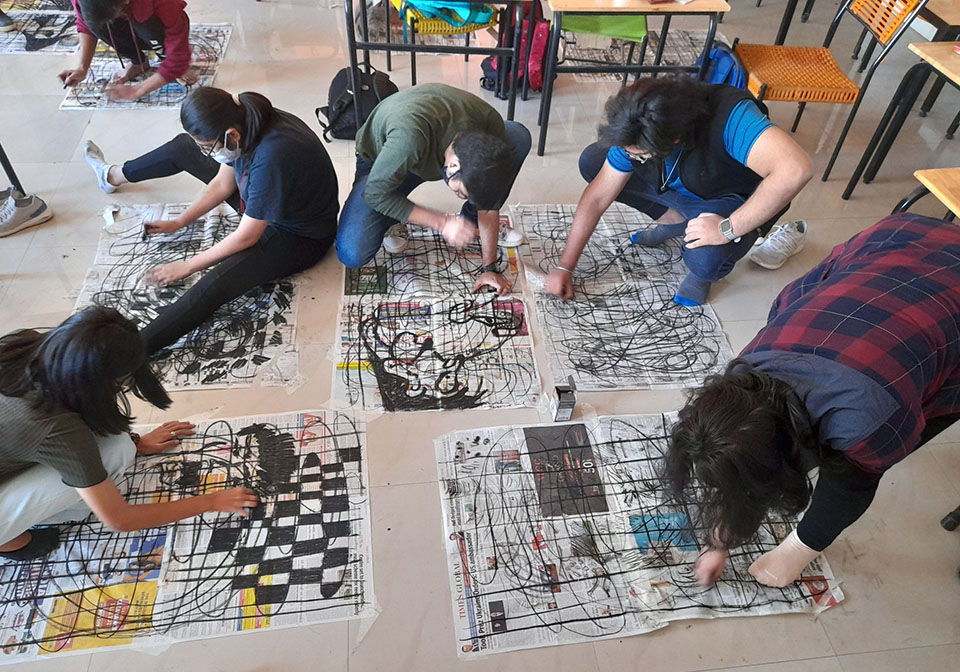
Class exercise from the studio ‘Rhythm and Ritual’
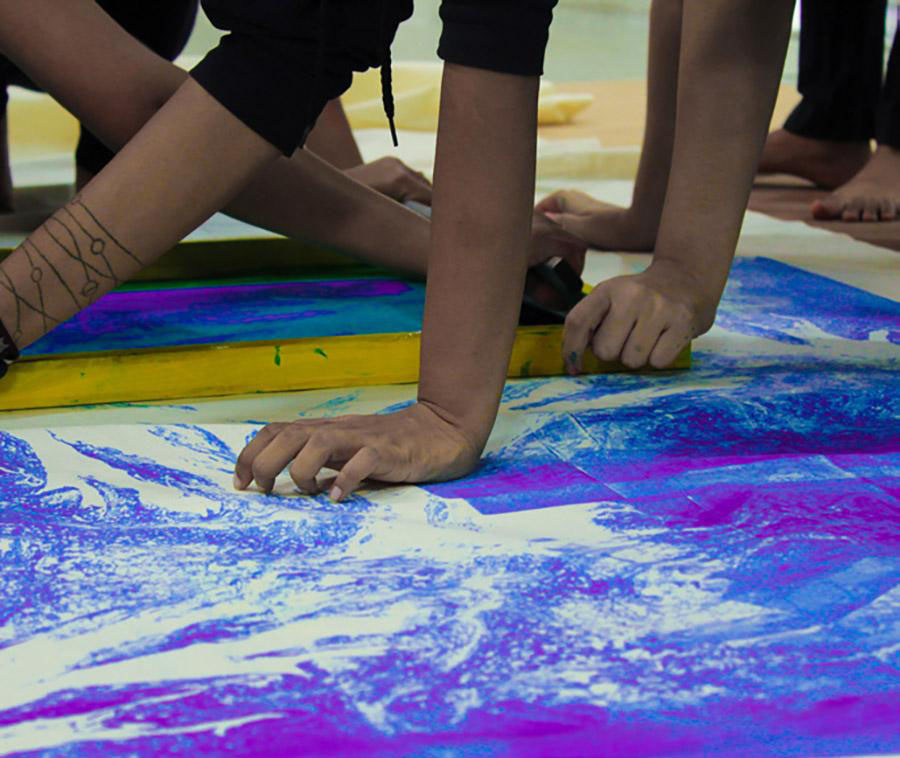
Students at an interim workshop
Course Structure
The curriculum comprises of different ways of learning as follows:
- Foundation introduces students to basic principles and tools of Art, Design and Technology as methods, tools and processes. Read more >>
- Disciplinary Studios are learning spaces where students develop core disciplinary capabilities, while navigating a trans-disciplinary environment
- General Studies is a common and compulsory programme of study that integrates Humanities, Sciences, Maths, business and finance. Development and Policy Studies and also offers Languages (Spanish, French and German) Read more >>
- Interim is an immersive introduction to practice in new and emerging areas of art and design and environmental exposure
- Electives are of three kinds - this program allows students to expand their skills, develop the interests as well as provide opportunities for travel exchange
- Internship/Apprenticeship is compulsory work experience done over the summer-break between the 6th and 7th semester
- Project based learning involves the application and synthesis of capabilities acquired. Two projects, pre-thesis and thesis, is culmination of the 4-year undergraduate program, which allows for demonstration of an integration of values, positions, capabilities and practice. Read more >>
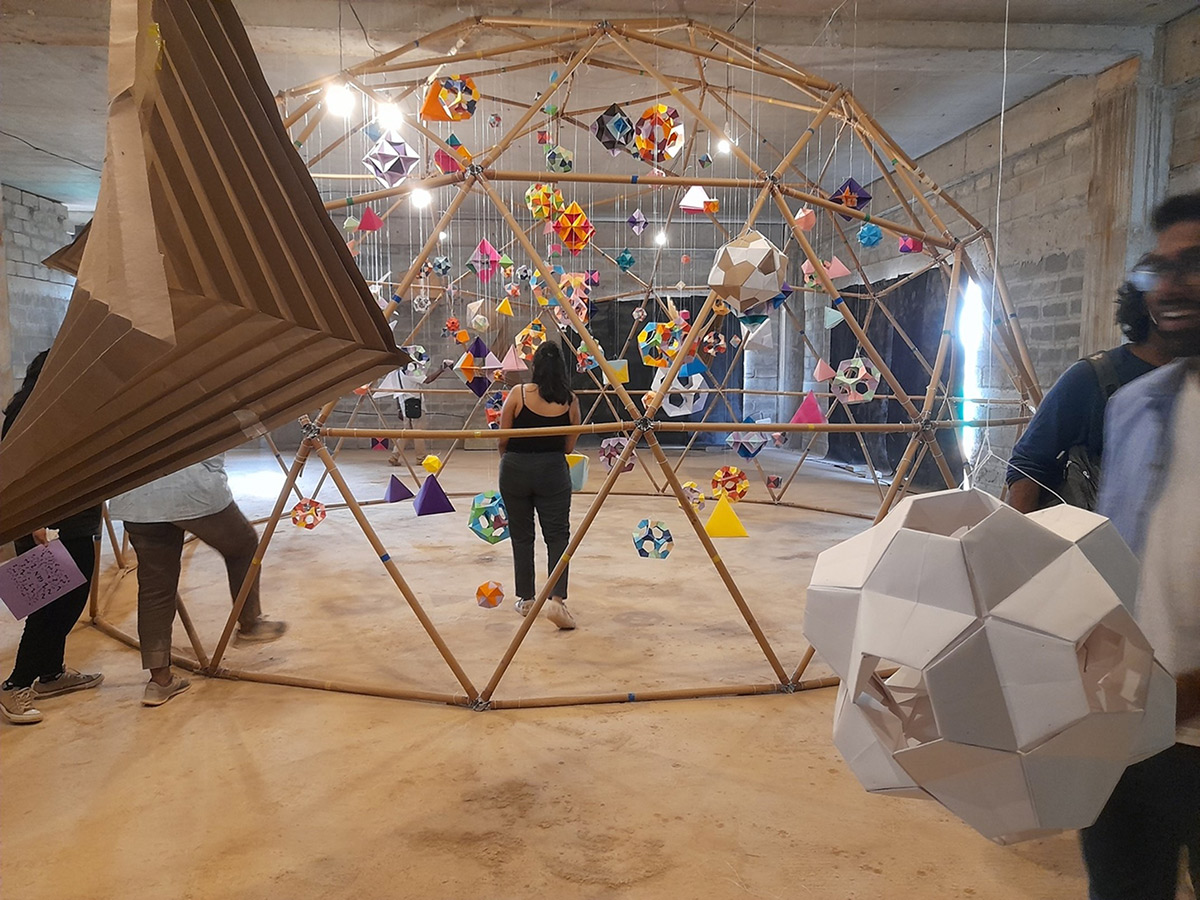
Origametria’ art installation for Interim - 2022
Learning Approach
Learning at the Undergraduate level in Contemporary Art Practice includes:
- Learning by making with old and new media like painting, sculpture, photography, 2d and 3d forms, film and video, animation, illustration, and new media tools.
- Develop a theoretical and interpretative framework and approaches to understand art worlds and practices.
- Emphasis on making through interdisciplinarity, for developing self-expression, and for working within creative economies.
- Develop analytical skills to reflect on unique and unconventional concepts.
- Contextual learning to create public and community art, performances, poetic experiences using variety of object oriented or ephemeral media.
- Exposure to global contemporary art practices, traditional craft and indigenous practices through interactions and associations.
- To develop participatory and socially-aware art through engagement with communities.
- Develop enquiries and undertake research, field trips and collaborations as a process to becoming an art practitioner.
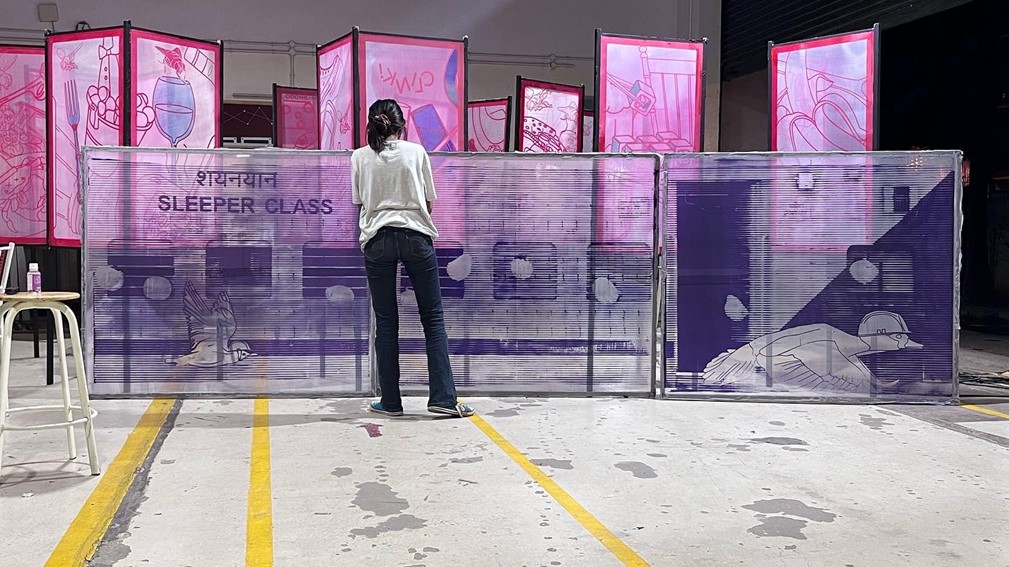
‘Veil’ art installation for Interim - 2022
Capabilities
Upon successful completion of this course graduates will have developed the following capabilities:
- Understanding inherent nature of variety of media and using them effectively.
- Develop skills in visual, sonic and spatial languages.
- Develop critical thinking skills in material culture and society.
- Develop lateral thinking by engaging in multi- disciplinary ways.
- To think and work using metaphors, signs and symbols to create diverse interventions and meaning.
- Understanding Art worlds across cultures to position oneself and one’s practice.
- Able to engage in individual, collaborative and participative artwork.
- Developing an expansive art-practice through curating art-experiences and exhibitions.
- Understanding historical theory, contexts and finding roots to base work upon in contemporary times.
Opportunities
The above capability sets equip and prepare the student for a wide range of career opportunities with:
- A career in the field of contemporary art as artists, curators, researchers and visual story-tellers.
- A career in cultural and creative industries like museums, galleries, art fairs and social organisations.
- Career in media industry like animation, advertising, film as graphic artists, visualisers, creative directors and scenographers.
- Career in the sphere of education as artist-teachers, curriculum builders in emerging pedagogies.
- Career in art for healing and therapeutic purposes.
- Higher education leading to specialised fields like art history and theory, curation, arts management.
People
Enquiries

Disciplinary Intersections
The program is informed by the following learning disciplines:
Botanical Art
Contemporary Art Practices
Curatorial Studies
Experimental Media Arts
Film
Game Art, Design and Development
Language Arts
Mathematical and Physical Sciences
Performing Arts
Photography
Visual Effects
Research and Collaboration
Students under this program will have an opportunity to work at the following labs at Srishti.
ArtScienceBLR
Blank noise project
Centre for Education, Research, Training and Development (CERTAD)
Center for Public History (CPH)
Design+Environment+Law Laboratory (DEL Laboratory)
Impact Edge
Srishti Films
Srishti Labs
The Kabir Project
FAQs
Our intention is to expose the student to the field of Contemporary Art. The learning units combine contemporary theoretical discourses in the arts and studio practices. This includes, but is not limited to, traditional mediums, like drawing, painting, sculpture, and printmaking, and extends to new media, sound, live contexts and public art. The program seeks to enable a student to shape their own creative practice as an artist. It is facilitated through interactions with practicing artists and practitioners from disciplines, such as visual communication, product design, film, and animation, etc. We, at Srishti, encourage an interdisciplinary approach towards the practice of contemporary art.
Besides a career as a studio artist, you can work for galleries, museums, and other arts organizations. You can consider being a curator, writing about art, doing art direction for advertising and film, or freelance work in the field of the creative industries.
There are no dedicated studio spaces for individual students; however, there are many specialized facilities such as carpentry, weaving, silk-screen, photography and printmaking, etc. These are located in workshop spaces and students always have access to workspaces. Students are encouraged to work collaboratively and to do off-site work as well. All the campuses have wi-fi and Srishti has an extensive library for reference. You will be responsible for acquiring your own materials.



